|
An organization’s ability to develop machine learning (ML) applications depends on its available resource base. Without awareness and understanding of all relevant resources as well as their impact on the ML lifecycle, we risk inefficient allocations as well as missing monopolization tendencies.
To counteract these risks, our recently pubished study develops a framework that interweaves the relevant resources with the procedural and technical dependencies within the ML lifecycle. To rigorously develop and evaluate this framework, our work follows the Design Science Research paradigm and builds on a literature review and an interview study. In doing so, it bridges the gap between the software engineering and management perspective to advance the ML management discourse. The results extend the literature by introducing not yet discussed but relevant resources, describing six direct and indirect effects of resources on the ML lifecycle, and revealing the resources’ contextual properties. Furthermore, the framework is useful in practice to support organizational decision-making and contextualize monopolization tendencies. Please read more about our research in our latest paper published in Business & Information Systems Engineering. Climate change and an increasing food demand due to a growing world population pose significant challenges for agriculture. Smallholders play a decisive role in establishing a sustainable and efficient future agricultural system since they already provide up to 80% of food in developing countries. However, they often face severe obstacles, especially in developing countries, hampering effective and efficient cooperation and productivity. Even though organizations in the form of cooperatives could help overcome some of the challenges of facilitating smallholders’ cooperation, they still suffer from structural problems. Further, in many countries, a lack of formal mechanisms to enforce contractual agreements exists. Given such challenges, decentralized autonomous organizations (DAOs) have already proven to provide alternative forms of governance independent of formal contracts or intermediaries.
Therefore, our recently published study follows the design science research paradigm to design, develop, and evaluate a decentralized autonomous organization in the agricultural sector that makes use of cooperative principles. This cooperative-oriented DAO is governed by smart contracts and technically enabled by blockchain technology as the underlying infrastructure. Through our developed and evaluated artifact, the AgriDAO, we guide researchers and practitioners on how such a cooperative-oriented DAO could look to solve existing problems related to smallholders and cooperatives. Additionally, we present eight design principles that will guide the development of cooperative-oriented DAOs. Finally, our research shall initiate lively discussion and extensive exploration of this new form of organization. Please read more about our research in our latest paper published in Information Systems and e-Business Management. Increasingly intelligent AI artifacts in human-AI systems perform tasks more autonomously as entities that guide human actions, even changing the direction of task delegation between humans and AI. It has been shown that human-AI systems achieve better results when the AI artifact takes the leading role and delegates tasks to a human rather than the other way around.
Our study presents phenomena, conflicts, and challenges that arise in this process, explored through the theoretical lens of principal-agent theory (PAT). The findings are derived from a systematic literature review and an exploratory interview study and are placed in the context of existing constructs of PAT. Furthermore, we identify new causes of tensions that arise specifically in AI-to-human delegation and calls for special mechanisms beyond the classical solutions of PAT. Our work thus contributes to the understanding of autonomous AI and its implications for human-AI delegation. I am happy that our paper "Task delegation from AI to humans: A principal-agent perspective" has been accepted for presentation at the 44th International Conference on Information Systems (ICIS 2023). The conference will take place from December 10 to 13 in Hyderabad, India. Application of agile software development methodologies in large-scale organizations is becoming increasingly common. However, working with multiple teams and on multiple products at the same time yields higher coordination and communication efforts compared to single-team settings for which agile methodologies have been designed originally.
With the introduction of agile methodologies at scale also comes the need to be able to report progress and performance not only of individual teams but also on higher aggregation of products and portfolios. Due to faster iterations, production of intermediate work results, increased autonomy of teams, and other novel characteristics, agile methodologies are challenging existing reporting approaches in large organizations. Based on 23 interviews with 17 practitioners from a large German car manufacturing company, our case study investigates challenges with reporting in large-scale agile settings. Further, based on insights from the case study, recommendations are derived. We find that combining reporting and agile methodologies in large-scale settings is indeed challenging in practice. Our research contributes to the understanding of these challenges, and points out opportunities for future research to improve reporting in large-scale agile organizations by goal-setting and automation. Please read more about our research in our latest paper published in Information Systems and e-Business Management. I am pleased and proud to have received the Most Active Author Award, in recognition of being one of the five authors out of more than 500 who have published the most articles in Electronic Markets in the last five years. Great to see that the recently published impact factor for Electronic Markets has increased again and is now 8.5.
While decentralized finance (DeFi) has the potential to emulate and, indeed, outperform existing financial systems, it remains a complex phenomenon yet to be extensively researched. To make the most of this potential, its practitioners must gain a rigorous understanding of its intricacies, as must information systems (IS) researchers.
Against this background, we carried out a multivocal literature review to capture the state of research in DeFi. Thereby, we (1) present a consolidating definition of DeFi as we (2) analyze, synthesize, and discuss the current state of knowledge in the field of DeFi. Furthermore, we (3) identify gaps in the literature and indicate future research directions in DeFi. Even though our findings highlight several shortcomings in DeFi that have prevented its widespread adoption, our literature review shows a large consensus on DeFi’s many promising features and potential to complement the traditional financial system. To that end, we encourage further research to mitigate the current risks of DeFi, the payoff of which will be an enriched financial ecosystem. Please read more about our research in our latest paper published in Electronic Markets. A couple of days ago, I gave a talk about the potentials and limitations of blockchain technology for the public sector (in German). Here you find the video recording of this talk.
Designing a cross-organizational identity management system based on self-sovereign identity17/4/2023
The introduction of blockchain offers new opportunities to rethink enterprise identity management. Recently, a new concept has emerged in the blockchain community called self-sovereign identity. Self-sovereign identity combines several existing decentralized identity management approaches, promising new ways to promote more convenient, connected, and secure identity services for the private and public sector.
Nevertheless, research in this area is still in its infancy. Most of the very few articles focus either on the opportunities self-sovereign identity might offer or on very specific technical features. Studies on real-world applications of organizations using modern self-sovereign identity implementations and design theory are very rare. To fill this gap, we followed the design science research approach to design, implement, and evaluate a self-sovereign identity system to present tax attributes of online retailers. We present four design principles and conclude that the use of self-sovereign identity and blockchain offers opportunities to improve verification processes. Please read more about our research in our latest paper published in Electronic Markets. Generative AI technologies, such as large language models, have the potential to revolutionize much of our higher education teaching and learning. ChatGPT is an impressive, easy-to-use, publicly accessible system demonstrating the power of large language models such as GPT-4. The recent technological developments trigger substantial uncertainty and change in university-level teaching and learning.
Students ask questions like: How can ChatGPT or other artificial intelligence tools support me? Am I allowed to use ChatGPT for a seminar or final paper, or is that cheating? How exactly do I use ChatGPT best? Are there other ways to access models such as GPT-4? Given that such tools are here to stay, what skills should I acquire, and what is obsolete? Lecturers ask similar questions from a different perspective: What skills should I teach? How can I test students’ competencies rather than their ability to prompt generative AI models? How can I use ChatGPT and other systems based on generative AI to increase my efficiency or even improve my students’ learning experience and outcomes? Even if the current discussion revolves around ChatGPT and GPT-4, these are only the forerunners of what we can expect from future generative AI-based models and tools. So even if you think ChatGPT is not yet technically mature, it is worth looking into its impact on higher education. This is where our recently published whitepaper comes in. It looks at ChatGPT as a contemporary example of a conversational user interface that leverages large language models. The whitepaper looks at ChatGPT from the perspective of students and lecturers. It focuses on everyday areas of higher education: teaching courses, learning for an exam, crafting seminar papers and theses, and assessing students’ learning outcomes and performance. For this purpose, we consider the chances and concrete application possibilities, the limits and risks of ChatGPT, and the underlying large language models. |
Archives
June 2024
|
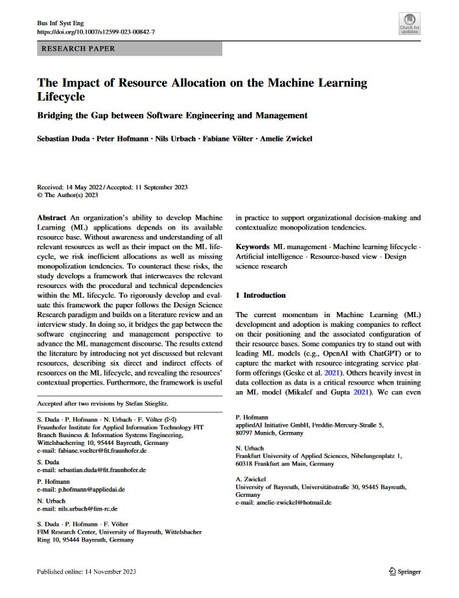

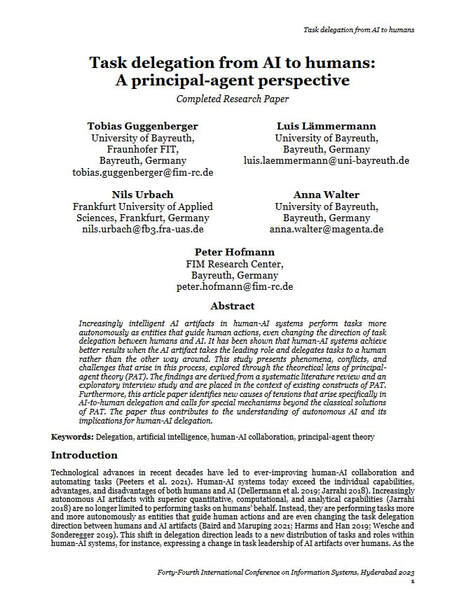
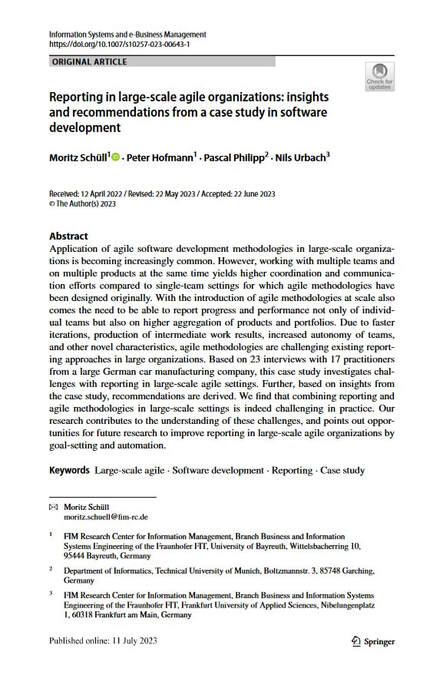
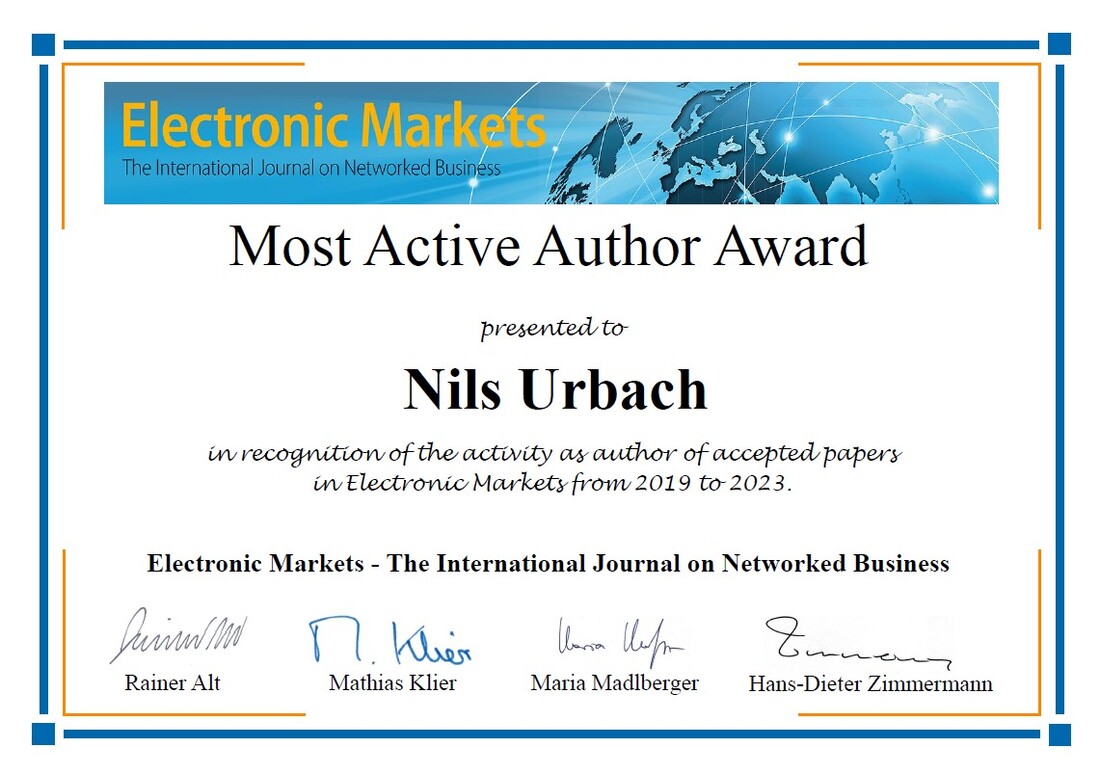
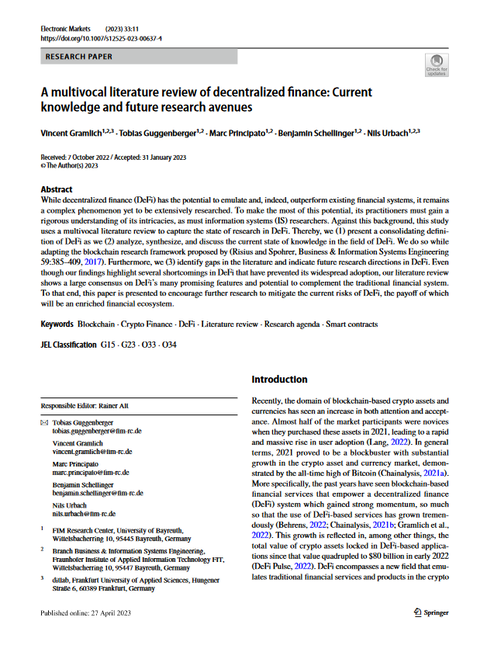
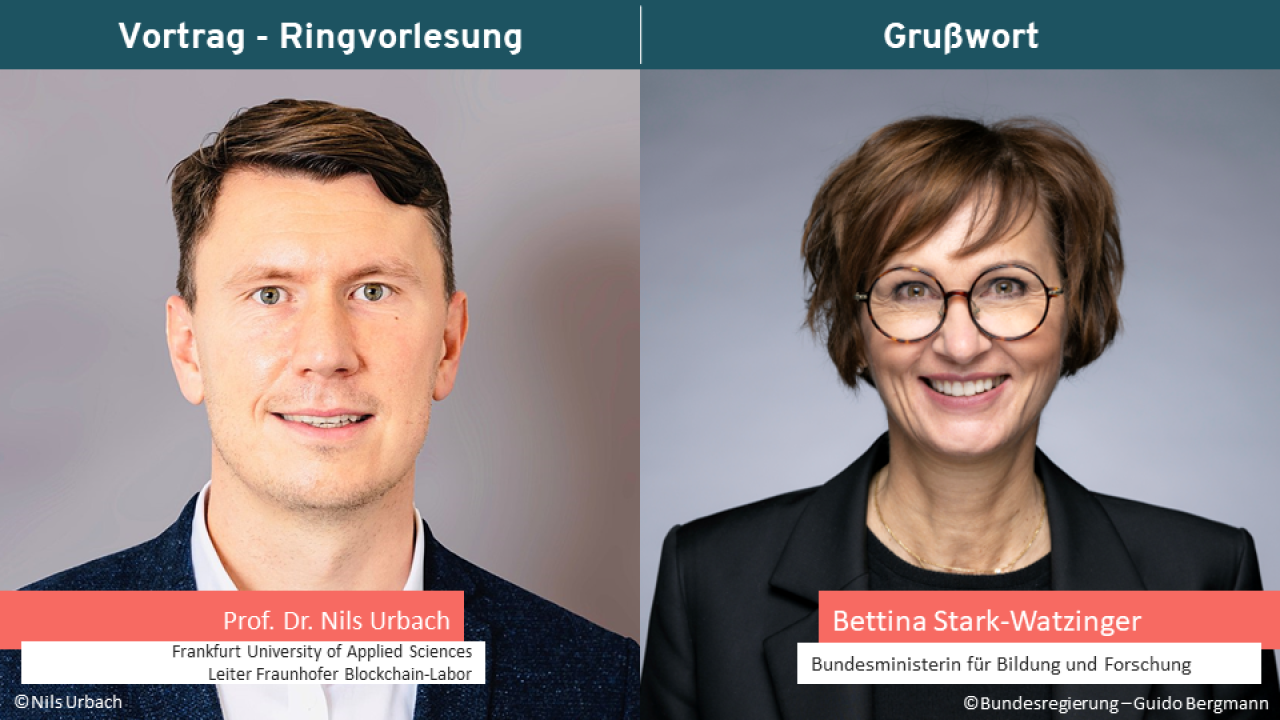

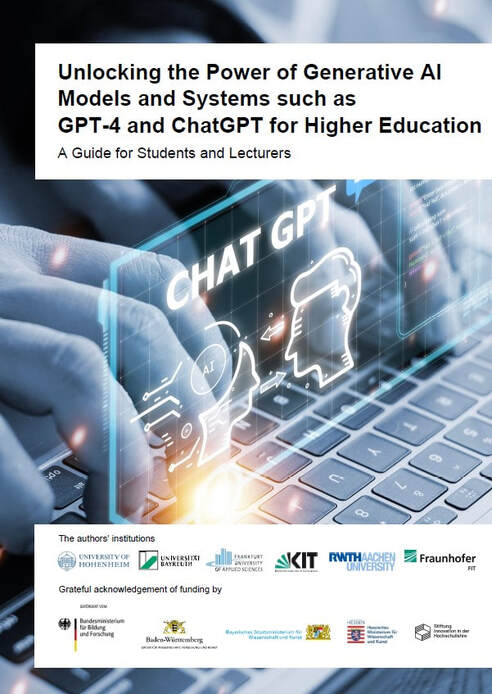
 RSS Feed
RSS Feed